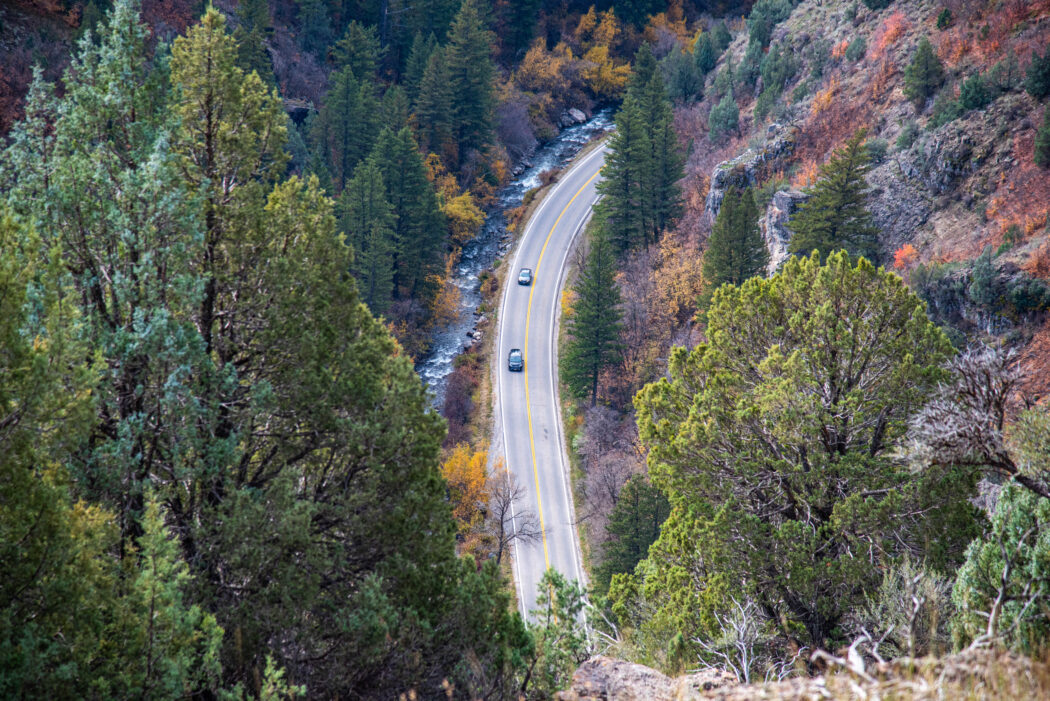Climate Adaptation Science minor helps Cache Valley adjust to change
Utah State University offers the Climate Adaptation Science program, a nine-credit interdisciplinary specialization that aims to integrate science, research and policy to approach the changing climate.
Comprising ten departments, including biology, ecology, environment and society and wildland resources, the program spans over two years and provides graduate students with hands-on experience in their field through extensive research and an internship with a project.
During the first few weeks, students are grouped together based on strengths and potential research interests. Throughout the first semester, they decide on a project that fits their workload, schedule and academic background.
The program’s fall 2020 cohort was made up of a combination of degrees such as ecology, wildland resources, environment and society and watershed sciences. Their project focused on rethinking agricultural methods for the Great Salt Lake’s survival.
Patrick Kelly, a Ph.D. student and CAS graduate, completed his project on alternative crops.
“Our team was interested in alternative crops for our changing climate here in Cache Valley,” Kelly said. “We had seen some of the worst drought years on record and knew that with water restrictions, farmers were suffering. A lack of water directly translates to a lack of income for many of them.”
Kelly, along with a team of four other graduate students, helped develop research for farmers to use if they wanted to switch from the current water-intensive crops to a more suitable option.
The students ran climate projections for Cache Valley, accounting for temperature and precipitation. They used these growing conditions for current crops and potential crops.
“We found that many crops use less water and can be more profitable than some of the major crops that are grown in Cache Valley currently,” Kelly said.
According to Kelly, there is a connection between their research and changing conditions for agriculture in the valley.
“We presented our findings at USU’s farm school,” Kelly said. “We talked to farmers about alternative crops that are less water-intensive, more heat-tolerant and the market conditions that made certain crops economically viable over others. We want farming to continue, but to also be economically viable so that folks can make ends meet, especially in water-scarce years where supply is limited.”
Kelly said the nature of his group’s project was interdisciplinary.
“We didn’t have an economist in our group but economics is a major part of our project,” Kelly said. “We were given the opportunity to connect with multiple economists to refine our methods and get quality data and tools to help solve issues.”
Mitchell Parsons, a Ph.D. candidate from the Department of Wildland Resources, was also part of the fall 2020 cohort that developed research on alternative crops.
“We explored future climate predictions to understand what growing season conditions may look like in the future,” Parsons said. “We then compiled data on a suite of currently grown and alternative crops and explored how they may grow in the future, what changes and replacements could be feasible and how decisions may depend on future water availability.”
Along with farmers and crops, wildlife is another piece of the biological web adapting to a changing climate.
“Learning to work with climate data can be useful when thinking about how many animals may have to shift their ranges to stay in their desired climates,” Parsons said.
Another component of the program is an internship with a government agency, a non-profit or one of the organizations CAS is partnered with. In Kelly’s case, he served with a private working bison ranch.
Kelly said the resiliency of the bison species has incredible potential to contribute to food security.
“Where cattle suffer and perish, bison are just fine,” Kelly said.
As temperatures rise and become more extreme, cattle struggle to tolerate it and survive.
“Bison don’t just survive, but thrive in the temperature we’re seeing and have predicted to intensify,” Kelly said. “Bison have a much lower negative impact on landscapes compared to cattle, increasing the biodiversity of multiple taxa, which then improves landscape resilience to climate change.”
Students gain a range of skills and experience even outside their field due to the program’s rich interdisciplinary coursework.
“The most valuable aspect was gaining experience working outside my typical field of wildlife biology,” Kelly said. “This gave me the opportunity to work with different data types, interact with different stakeholders and think about different challenges related to the broad field of ecology.”
An important pillar of the program is the interaction between science and policy. The CAS program integrates the two fields through both coursework and guest speakers.
Abby Bushman, the program coordinator, regularly assists students with project development, internship planning and navigating the program.
“The speakers vary for each cohort and are chosen to help them with their research and become better communicators,” Bushman said.
“Perhaps the conversations with state employees and representatives were the most tangible integration of science and policy,” Parsons said. “Throughout the program, we took courses on decision-making, met with speakers from science and policy backgrounds, and participated in panels that included scientists, state employees and state representatives.”
Climate change and adaptations bring on complex issues that take a collaborative effort to approach, and the program attracts an array of students from different disciplines.
“We had students from all across the sciences coming together, each bringing their expertise to solve real world problems,” Kelly said. “We had the freedom to learn as well.”
Following graduation, students go on to work at federal or state agencies, industry giants such as BioWest, nonprofits or universities.
“Sometimes in school, we learn to leave specialist information to specialists,” Kelly said. “In CAS, we were encouraged to be that bridge, gain new skills and knowledge sets, and integrate holistically how to solve these very real and very diverse problems.”

